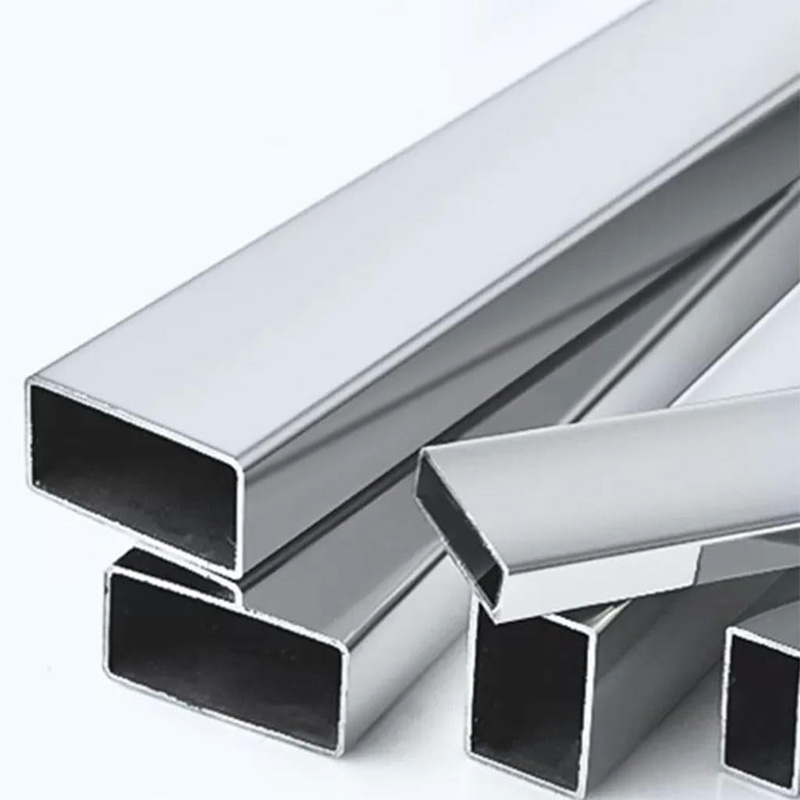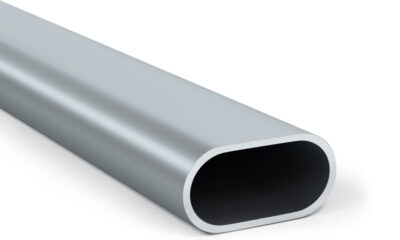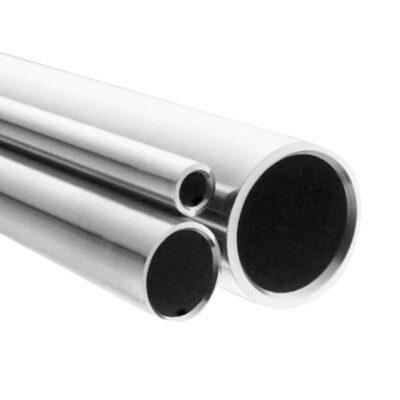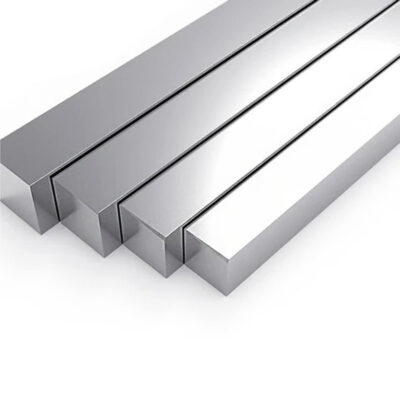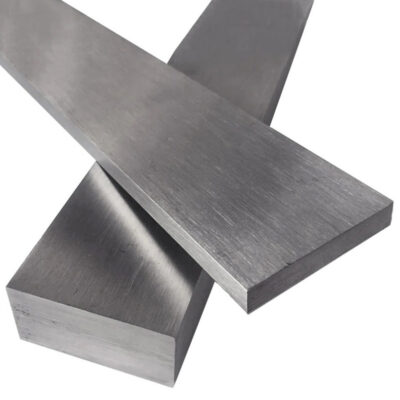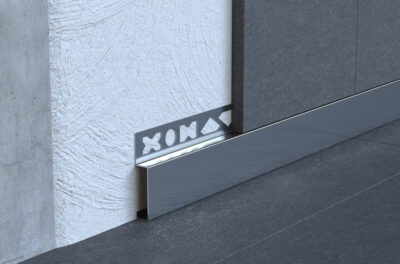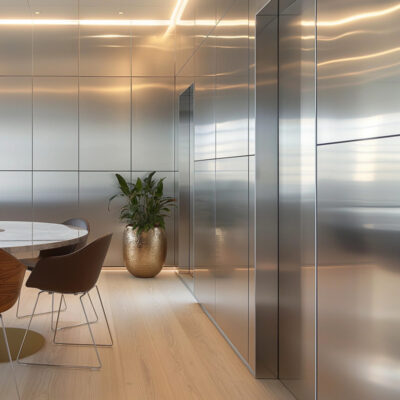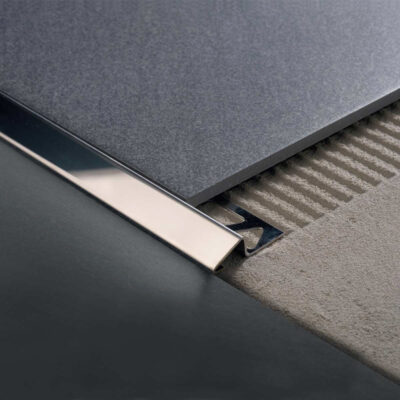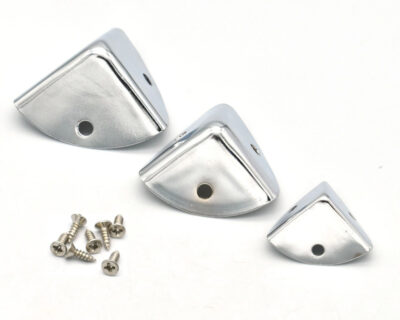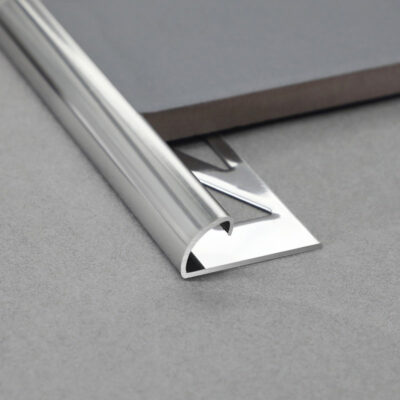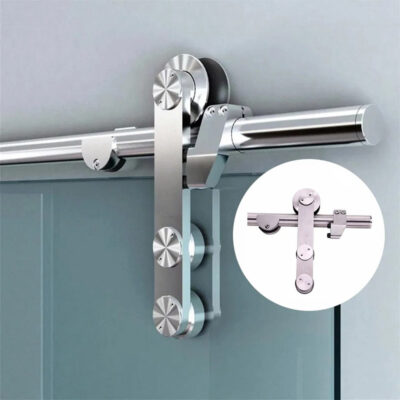Understanding Square and Rectangular Stainless Steel Tubes
The first time I encountered square and rectangular stainless steel tubes on a major construction site, I was struck by how these seemingly simple components were integral to the building’s structural integrity and aesthetic appeal. These hollow structural sections represent a perfect marriage of form and function that many of us take for granted in our built environment. What distinguishes these particular steel profiles isn’t just their shape, but the remarkable properties of stainless steel that make them suitable for applications ranging from architectural masterpieces to critical industrial infrastructure.
Square and rectangular stainless steel tubes differ fundamentally from their round counterparts in how they distribute loads and integrate with other structural elements. The flat surfaces provide superior connection points, while their symmetrical profiles offer predictable behavior under stress. During a recent renovation project, I noticed how contractors could position and weld these components with exceptional precision—something that would have been considerably more challenging with circular sections.
The stainless steel composition adds another dimension entirely. Unlike carbon steel alternatives that might offer similar structural properties, the corrosion resistance of stainless steel tubes eliminates many long-term maintenance concerns. E-Sang manufactures these tubes with particular attention to surface finish and dimensional consistency, factors that prove critical in demanding applications.
What’s particularly interesting about square and rectangular stainless steel tubes is their versatility. They serve both visible architectural roles and hidden structural functions. I’ve watched fabricators transform these simple components into complex assemblies for everything from sleek furniture to heavy industrial equipment. The rectangular variant, with its different dimensions on adjacent sides, offers additional design flexibility when directional stress management matters.
Manufacturing methodology significantly influences the final characteristics of these products. Cold-formed tubes, created by rolling flat steel and welding the seam, differ from hot-finished varieties in terms of internal stress patterns and corner radii. Understanding these distinctions proves essential when selecting the appropriate tube for specific applications.
Manufacturing Processes and Material Composition
Walking through a stainless steel tube production facility last year gave me an entirely new appreciation for the complexity behind these seemingly simple products. The journey from raw material to finished tube involves multiple precise steps, each critical to the final performance characteristics.
Stainless steel tubes begin their life as flat strips or coils. These undergo careful inspection for surface defects before entering the forming process. The manufacturing method generally follows one of two paths: cold forming or hot finishing. Cold forming, which I observed during my facility tour, involves progressively bending the strip through a series of rollers until it forms a circular shape. The edges are then welded together—typically using electric resistance welding (ERW) or laser welding—creating what’s called a “welded tube.”
“The quality of the weld seam determines much of the tube’s structural integrity,” explained the production manager. “We use automated ultrasonic testing to verify every inch of that seam meets our standards.” This welded circular tube then passes through specialized shaping rolls that progressively transform it into the desired square or rectangular profile.
The material composition varies significantly depending on the intended application. While many people think of “stainless steel” as a single material, it actually encompasses dozens of distinct alloys. The most common grades used for square and rectangular tubes include:
| Grade | Primary Components | Key Characteristics | Typical Applications |
|---|---|---|---|
| 304/304L | 18% Chromium, 8% Nickel | Good corrosion resistance, excellent formability | General construction, food processing equipment, architectural |
| 316/316L | 16% Chromium, 10% Nickel, 2% Molybdenum | Superior corrosion resistance, especially to chlorides | Marine environments, chemical processing, pharmaceutical equipment |
| 321 | Similar to 304 with titanium addition | Resistant to intergranular corrosion at high temperatures | Heat exchangers, exhaust systems |
| 2205 | 22% Chromium, 5% Nickel (Duplex) | Higher strength, excellent stress corrosion resistance | Structural applications in aggressive environments |
During heat treatment, these tubes undergo controlled cooling to develop their specific mechanical properties. The cooling rate affects grain structure, which in turn influences strength, ductility, and corrosion resistance. I found it fascinating that something as seemingly simple as cooling speed could dramatically alter the performance characteristics of the final product.
Surface finish represents another critical manufacturing consideration. Options range from mill finish to various polished surfaces, each with specific applications. For architectural applications, a highly polished finish might be specified for aesthetic reasons, while industrial applications might prioritize a matte finish that shows fewer scratches during operation.
One manufacturing challenge that’s rarely discussed involves maintaining dimensional consistency throughout the production process. As the metal is formed and welded, internal stresses can cause subtle distortions. Manufacturers employ specialized straightening techniques to ensure the final product meets tight dimensional tolerances.
Technical Specifications and Industry Standards
During a recent consultation with a structural engineering team, I was reminded how critical precise technical specifications are when selecting square and rectangular stainless steel tubes. These aren’t just arbitrary numbers but carefully established parameters that determine real-world performance.
Dimensional specifications typically begin with the outside dimensions—the width and height for rectangular tubes or the equal sides for square tubes. Wall thickness represents another critical measurement, directly affecting load-bearing capacity and weight. What surprised me during our discussion was how tightly controlled these dimensions must be. Modern manufacturing maintains tolerances within fractions of a millimeter, ensuring consistent performance across production runs.
“We can’t afford even minor variations in critical structural components,” the chief engineer explained. “Our safety factors depend on predictable material behavior.”
Industry standards provide the framework for specifying these products, with several organizations establishing requirements:
| Standard | Origin | Scope | Key Requirements |
|---|---|---|---|
| ASTM A554 | United States | Dimensional and mechanical properties | Specifies tolerances, tensile requirements, chemical composition |
| EN 10219 | European Union | Cold-formed welded tubes | Defines technical delivery conditions for construction applications |
| JIS G3446 | Japan | Stainless steel tubes for structural purposes | Establishes testing methods and acceptance criteria |
| AS/NZS 1163 | Australia/New Zealand | Cold-formed structural steel hollow sections | Covers mass, dimensions, and tolerances for square and rectangular tubes |
Beyond dimensions, mechanical properties determine how these tubes perform under load. Tensile strength—measured in megapascals (MPa) or pounds per square inch (psi)—indicates the maximum stress the material can withstand before failure. Yield strength, which I’ve found equally important in many applications, indicates when the material begins to deform permanently.
During product testing, manufacturers also evaluate:
- Hardness (typically using the Rockwell or Brinell scale)
- Elongation percentage (indicating ductility)
- Impact resistance (especially important in cold-weather applications)
- Weld integrity through various non-destructive testing methods
Surface finish specifications use parameters like Ra (roughness average) or grit numbers to quantify the texture. While investigating options for a food processing facility project, I discovered how critical these specifications become in hygienic applications, where bacterial harbor points must be minimized.
Tolerance classifications deserve particular attention. These indicate how much dimensional variation is permissible from the specified measurements. For precision applications, tighter tolerances (at higher cost) may be necessary, while general construction might accommodate standard tolerances.
Chemical composition testing ensures the material meets the specified grade requirements. Modern analysis techniques like optical emission spectroscopy can verify precise element percentages within minutes, allowing manufacturers to certify exact material composition.
Certification documentation typically accompanies these products, providing traceability throughout the supply chain. During one particularly demanding project involving critical safety components, we required full documentation packages including material test reports (MTRs), inspection certificates, and dimensional verification records.
Applications Across Diverse Industries
The versatility of square and rectangular stainless steel tubes becomes apparent when examining their applications across industries. I’ve encountered these components in settings ranging from gleaming architectural landmarks to rugged industrial facilities, each leveraging different aspects of their performance characteristics.
In architectural applications, the clean lines and corrosion resistance make these tubes ideal for exposed structural elements and decorative features. During a renovation project for a coastal resort, we specified 316-grade rectangular tubes for balcony railings specifically because of their ability to withstand saltwater exposure. The architect commented on how the rectangular profile created stronger visual lines than traditional round railings while simplifying glass panel installation.
Construction professionals frequently incorporate these products into building frameworks, particularly in environments where corrosion resistance justifies the higher initial cost. I’ve seen remarkable examples where stainless structural tubes have maintained their integrity for decades in environments that would have degraded carbon steel alternatives within years.
The food processing industry presents particularly demanding applications. During a tour of a dairy processing facility, I noted how square stainless tubes formed the structural framework for processing equipment. The plant engineer explained that beyond corrosion resistance, the smooth surfaces and minimal crevices simplified cleaning and sanitizing procedures—critical for maintaining food safety standards.
Transportation applications leverage the combination of strength and weight characteristics. In a discussion with an automotive designer, she highlighted how rectangular stainless tubes provided ideal solutions for structural components in specialty vehicles—particularly those exposed to harsh environmental conditions or requiring high cleanliness standards.
The medical equipment sector represents another demanding application environment. Square and rectangular tubes appear in everything from surgical tables to imaging equipment frameworks, where their non-magnetic properties (in austenitic grades) prove particularly valuable for MRI compatibility.
Industrial equipment applications demonstrate perhaps the most diverse utilization:
- Heat exchangers for corrosive fluids
- Structural components in chemical processing equipment
- Frames for filtration systems
- Support structures for solar panel arrays
- Components in industrial washing systems
During a project for a chemical processing facility, I witnessed the specification process for rectangular tubes that would be exposed to both corrosive chemicals and high temperatures. The engineering team selected 321-grade stainless specifically for its resistance to sensitization (a form of intergranular corrosion that can occur at elevated temperatures).
Custom fabrications often leverage these tubes in unexpected ways. A furniture designer I collaborated with created striking contemporary pieces using square stainless tubes with specialized surface finishes. The resulting tables and chairs combined structural integrity with visual elegance that would have been difficult to achieve with any other material.
Marine applications highlight the material’s resistance to saltwater environments. From boat railings to dock structures, these tubes maintain their appearance and structural properties despite constant exposure to corrosive conditions. A marina operator told me they had switched exclusively to 316-grade stainless for all exposed structural components after experiencing rapid degradation with other materials.
Selection Criteria for Project Success
Choosing the right square or rectangular stainless steel tube involves balancing multiple factors. Over years of specifying these components, I’ve developed a systematic approach to selection that has prevented costly mistakes.
The environment where the tube will function should be your starting point. I learned this lesson the hard way when a project using 304-grade tubes in what appeared to be a standard indoor setting experienced premature corrosion. Further investigation revealed periodic exposure to cleaning chemicals containing chlorides—exactly the type of environment where upgrading to 316-grade would have been appropriate.
Load requirements constitute another primary consideration. During consultation with a structural engineer about a pedestrian bridge project, we calculated both static loads (the bridge’s weight plus expected pedestrian traffic) and dynamic loads (forces from wind and pedestrian movement). These calculations directly informed our tube dimension and wall thickness selections.
Here’s a framework I’ve found helpful for organizing selection criteria:
| Selection Factor | Considerations | Potential Impact |
|---|---|---|
| Environmental Exposure | Temperature ranges, Chemical exposure, Humidity levels, UV exposure | Determines appropriate grade selection (304 vs 316 vs specialty grades) |
| Structural Requirements | Static loads, Dynamic loads, Deflection limits, Connection methods | Influences dimensional choices and wall thickness |
| Aesthetic Considerations | Visible vs concealed installation, Surface finish requirements, Color consistency | May require specific manufacturing processes or surface treatments |
| Fabrication Needs | Welding methods, Bending requirements, Connection details | Some grades and dimensions are more suitable for specific fabrication techniques |
| Budget Constraints | Material costs, Installation complexity, Lifecycle expectations | Balances initial costs against long-term performance and maintenance |
When evaluating surface finish options, I recommend requesting physical samples rather than relying solely on specifications. During a high-profile architectural project, we discovered significant visual differences between nominally identical finishes from different suppliers. The client ultimately selected a slightly more expensive option that provided the precise aesthetic they sought.
Connection methods deserve careful consideration during the selection process. Welded connections offer the greatest strength but require appropriate equipment and expertise for stainless steel. Mechanical fastening provides more installation flexibility but introduces potential weak points and crevices where corrosion might initiate. I typically recommend welded connections for structural applications and mechanical fastening for components that may require future disassembly.
One often overlooked selection factor involves thermal expansion. Stainless steel expands and contracts more than carbon steel with temperature changes. During a project involving long tube runs in a variable temperature environment, we incorporated expansion joints at strategic intervals to prevent buckling or joint stress.
Availability can sometimes drive selection decisions. I recently specified a less common tube dimension for a critical project, only to discover an 8-week lead time. We ultimately redesigned using more readily available dimensions to meet the construction schedule. This experience taught me to verify availability early in the design process, particularly for specialty sizes or grades.
Cost considerations extend beyond the initial purchase price. When evaluating options for a long-term infrastructure project, we conducted lifecycle cost analysis comparing 304-grade tubes (lower initial cost) against 316-grade alternatives (higher cost but longer lifespan in the specific environment). The analysis revealed that despite a 22% higher initial cost, the 316-grade option projected a 15% lower total lifetime cost due to reduced maintenance and replacement needs.
Installation and Fabrication Best Practices
The first time I supervised the installation of a complex stainless steel framework, I quickly realized that working with these materials differs significantly from standard carbon steel. Their unique properties demand specific approaches to handling, cutting, joining, and finishing.
Proper material handling begins with receiving and storage. Unlike carbon steel, stainless requires careful handling to prevent surface contamination. I’ve developed a standard protocol requiring clean cotton gloves for handling exposed surfaces and plastic protective coverings for storage. Cross-contamination from carbon steel tools or work surfaces presents a particular risk—even microscopic carbon steel particles embedded in stainless surfaces can initiate localized corrosion.
Cutting techniques vary based on the specific application and available tools. During a recent architectural installation, we employed several methods:
- Abrasive cutting with aluminum oxide wheels specifically designated for stainless steel
- Bandsaw cutting with bimetal blades at appropriate speeds and feeds
- Plasma cutting for complex profiles, carefully controlling parameters to minimize heat-affected zones
“The key difference with stainless is heat management,” explained our lead fabricator. “These alloys conduct heat differently than carbon steel, requiring adjusted techniques.” Excessive heat during cutting can sensitize the material, potentially reducing corrosion resistance near cut edges.
Joining methods primarily include welding and mechanical fastening. For welded connections, process selection proves critical:
| Welding Process | Advantages | Limitations | Best Applications |
|---|---|---|---|
| TIG (GTAW) | Superior control, excellent finish, minimal cleanup | Slower, requires skilled operators | Visible connections, critical structural joints |
| MIG (GMAW) | Faster deposition, easier to learn | More spatter, typically requires cleanup | Concealed structural connections |
| Resistance Welding | Clean, consistent, no filler metal | Limited to certain joint configurations | Mass production, thin-wall applications |
| Laser Welding | Precise, minimal heat input | Expensive equipment, joint fit-up critical | Precision components, thin materials |
During a complex fabrication project, I observed firsthand how proper filler metal selection impacts joint performance. The metallurgist specified fillers that not only matched the base metal strength but also provided slightly enhanced corrosion resistance at the weld zone—a subtle but important detail for long-term performance.
Mechanical fastening requires careful material selection to prevent galvanic corrosion. I specify only stainless fasteners compatible with the tube material. In one pedestrian railing project, we discovered standard 304 stainless fasteners showing corrosion when used with 316 tubes in a marine environment. The solution involved upgrading all fasteners to match the 316 tube material.
Bending operations for these tubes require specialized equipment and techniques. Cold bending introduces work hardening that can significantly increase the material’s strength while potentially reducing ductility. When tight radius bends are required, annealing may be necessary to restore formability. During one architectural project requiring complex curved sections, we found that mandrel bending with properly sized tooling prevented tube wall collapse at the bend.
Surface finishing after fabrication often proves essential for both aesthetic and performance reasons. Welds particularly require attention to restore corrosion resistance. I typically specify full passivation of completed assemblies—a chemical process that removes free iron from the surface and enhances the natural chromium oxide layer that gives stainless its corrosion resistance.
“Many fabrication problems with stainless result from treating it like carbon steel,” noted a veteran fabricator during a facility tour. “It’s a different material with different requirements.” This insight has guided my approach to specifying both materials and processes for stainless tube projects.
Comparative Analysis with Alternative Products
When evaluating square and rectangular stainless steel tubes against alternatives, I find it essential to consider not just initial cost but overall performance characteristics across the application lifecycle. During a recent industrial project, we conducted a detailed comparison that revealed some interesting insights.
Carbon steel tubes represent the most common alternative, offering significant upfront cost advantages—typically 40-60% lower than comparable stainless options. However, this comparison shifts dramatically when examining corrosion resistance and maintenance requirements. In a chemical processing application I consulted on, the initial 55% premium for stainless tubes was completely offset by eliminated coating requirements and extended service life.
The structural performance comparison yields more nuanced results:
| Property | Stainless Steel Tubes | Carbon Steel Tubes | Aluminum Tubes |
|---|---|---|---|
| Strength-to-Weight | Moderate-High (Application-specific) | High (Most efficient for pure strength) | Very High (Lightest option at equal strength) |
| Corrosion Resistance | Excellent (No coatings required) | Poor (Requires protective coatings) | Good (Forms protective oxide layer) |
| Temperature Resistance | Excellent (Maintains properties at high temperatures) | Good (Properties degrade at elevated temperatures) | Poor (Significant strength loss at higher temperatures) |
| Initial Cost | High | Low | Moderate-High |
| Lifecycle Cost | Often lowest in corrosive environments | Varies (Can be high with maintenance) | Moderate (Lower maintenance than carbon steel) |
The shape comparison between round tubes and square/rectangular options presents another important consideration. During a structural project, the engineer specifically selected rectangular tubes over round alternatives despite a 15% cost premium. The decision was driven by multiple factors: simplified connection details, greater moment of inertia along specific axes, and flat surfaces that eliminated the need for specialized connection hardware.
“When we factor in the reduced fabrication time with square sections, the apparent cost premium disappears,” the project manager explained. “The flat surfaces simplify everything from measurement to attachment.”
Material grades within the stainless family offer their own comparative considerations. When analyzing options for a food processing equipment framework, we evaluated 304 versus 316 grades. The 316 grade commanded a 25% premium but provided substantially better resistance to chloride-containing cleaning chemicals. The decision matrix included operational factors beyond simple material cost.
I’ve found that shape efficiency often favors square and rectangular tubes in structural applications. Their moment of inertia (resistance to bending) can be optimized along specific axes by selecting appropriate dimensions. This targeted strength proves particularly valuable in applications with predominant loading directions.
Aesthetic considerations sometimes drive selection decisions beyond performance metrics. During an architectural project featuring exposed structural elements, the sharp, clean lines of rectangular stainless tubes aligned with the modern design aesthetic. Round tubes would have created a fundamentally different visual impression despite similar structural performance.
One surprising comparison emerged during a transportation equipment project where weight represented a critical factor. The engineering team initially assumed aluminum would provide the lightest solution, but detailed analysis revealed that high-strength stainless tubes with thinner walls could achieve comparable weight while offering superior durability in the abrasive operating environment.
Fabrication considerations sometimes favor square and rectangular sections, as their flat surfaces simplify cutting, drilling, and connection details. I observed this advantage during a custom machinery project where the fabrication team estimated a 30% reduction in assembly time compared to round tube alternatives.
The environmental impact comparison increasingly influences material selections. While stainless steel’s production carries a higher initial carbon footprint than carbon steel, its durability and recyclability can result in a lower lifetime environmental impact. During a LEED-certified building project, the lifecycle analysis factored these considerations alongside performance metrics.
Future Trends and Innovations
The landscape for square and rectangular stainless steel tubes continues to evolve through technological advances and shifting market demands. During a recent industry conference, I gained insights into emerging trends that will likely reshape how these products are manufactured and utilized in coming years.
Advanced manufacturing techniques are transforming production capabilities. Laser welding technology has significantly improved weld quality while reducing heat-affected zones. “We’re achieving weld integrity that would have been impossible with conventional methods a decade ago,” noted a manufacturing engineer during a panel discussion. These improvements enable thinner wall sections with equivalent performance, reducing material usage and weight.
High-strength stainless steel grades are gaining traction in structural applications. These materials, with yield strengths up to 50% higher than conventional grades, allow for reduced wall thickness while maintaining load-bearing capacity. During a consultation for a lightweight structural framework, I found these high-strength options enabled a 30% weight reduction compared to standard grades—a significant advantage for transportation applications.
Surface technology innovations are expanding performance capabilities. I recently examined electropolished tubes with embedded antimicrobial compounds, specifically developed for healthcare applications. These specialized surface treatments create inherently more hygienic surfaces while maintaining the material’s core structural properties.
Computational design optimization is revolutionizing how these components are specified and utilized. Advanced finite element analysis now allows engineers to precisely model stress distributions and optimize tube dimensions for specific loading conditions. “We’re moving away from overdesigned, one-size-fits-all approaches,” explained a structural engineer at the conference. “Modern analysis lets us tailor tube specifications precisely to application requirements.”
Sustainability considerations are increasingly driving both manufacturing processes and material selections. Stainless steel’s high recycled content and indefinite recyclability align well with circular economy principles. During a green building certification project, we documented how the specified stainless tubes contained over 60% recycled content while remaining fully recyclable at end of life.
Market trends suggest growing demand for these products in several sectors:
- Urban infrastructure projects increasingly specify stainless for extended service life in challenging environments
- Solar energy mounting systems leverage the corrosion resistance for decades of outdoor exposure
- Green building certification programs reward the durability and recycled content
- Healthcare facilities value the hygienic properties and chemical resistance
Production technology improvements are gradually reducing the cost premium associated with these products. “We’ve achieved approximately 15% manufacturing cost reduction over five years through process optimization,” revealed a production manager at a leading manufacturer. These efficiencies help offset raw material price volatility and make stainless options more competitive in previously cost-sensitive applications.
The move toward modular construction methods creates new opportunities for these products. Prefabricated building components often leverage square and rectangular tubes for their consistent dimensions and connection simplicity. During a modular construction project, I observed how the dimensional stability of stainless tubes facilitated precise assembly of components manufactured at different facilities.
Material science developments continue to expand application possibilities. Duplex stainless grades, with their combination of high strength and excellent corrosion resistance, are finding new applications in structures previously dominated by carbon steel. These materials offer nearly twice the yield strength of conventional austenitic stainless while maintaining comparable corrosion resistance.
Looking ahead, I anticipate increased integration of these tubes with other materials through advanced joining technologies. During a research laboratory visit, I observed promising developments in direct joining of stainless to dissimilar materials like advanced composites and specialized polymers. These hybrid construction methods could open entirely new application possibilities by combining the best properties of multiple materials.
Digital manufacturing and supply chain integration represent another significant trend. “Smart factories” now track materials from melt to finished product, providing complete traceability and quality documentation. For critical applications like pharmaceutical equipment, this traceability offers significant advantages in validation and compliance.
The evolution of these products reflects broader trends toward high-performance, sustainable building materials with verifiable quality and documented environmental credentials. As design professionals increasingly factor lifetime performance and environmental impact into material selections, square and rectangular stainless steel tubes are well-positioned to meet these expanding requirements.
Optimizing Selection and Application
After exploring the various aspects of square and rectangular stainless steel tubes, I’ve found that successful implementation ultimately depends on making informed decisions that balance technical requirements, practical considerations, and long-term objectives.
The selection process should begin with a clear understanding of the operating environment. During a consultation for a chemical processing facility, we developed a detailed environmental profile including temperature ranges, chemical exposures, cleaning protocols, and expected service life. This profile became the foundation for material grade selection, with 316L ultimately specified due to periodic exposure to process chemicals containing chlorides.
Structural requirements naturally inform dimensional decisions. Working with engineers, I’ve developed a practice of examining not just static loads but also dynamic forces, vibration potential, and connection details. For a pedestrian bridge project, this comprehensive approach led us to specify slightly heavier wall thicknesses than the static calculations required, accounting for vibration damping and connection reinforcement.
Budget realities often necessitate creative optimization. When faced with cost constraints on an architectural project, we worked with the fabricator to identify where premium finishes were truly needed (visible surfaces) versus where standard finishes sufficed (concealed structural elements). This targeted approach delivered the desired aesthetic within budget parameters.
Fabrication and installation considerations should influence early design decisions. I recall a project where the specified tubes required transport through narrow existing corridors. By engaging the installation team during design, we modified connections to enable in-place assembly of smaller components rather than requiring pre-assembled sections that wouldn’t navigate the space constraints.
Maintenance requirements deserve careful consideration during selection. For an outdoor installation in a coastal environment, we developed detailed maintenance protocols based on the specific material grade and finish. These protocols, when followed, have extended the expected service life by approximately 40% according to condition assessments conducted five years after installation.
When considering surface finishes, I recommend evaluating both immediate aesthetic requirements and long-term performance expectations. For a high-traffic public installation, we specified a slightly textured finish rather than a mirror polish—not only for its more forgiving appearance when subjected to public contact but also for its improved scratch resistance in everyday use.
Connection details often determine overall system performance. During a structural framework project, we worked with the fabricator to design connections that maintained the corrosion resistance of the entire assembly. This involved careful selection of compatible fasteners, elimination of crevice-creating designs, and specification of appropriate welding procedures to maintain material properties in heat-affected zones.
The balance between standardization and customization presents another important consideration. Leveraging standard dimensions and readily available materials typically reduces costs and lead times. However, certain applications justify custom solutions. For a specialized industrial equipment project, we specified custom-drawn rectangular tubes with precise dimensional tolerances that simplified downstream assembly operations, ultimately reducing total project cost despite the premium material price.
Quality assurance protocols should align with application criticality. For a safety-critical structural application, we implemented comprehensive testing including 100% weld inspection, material certification verification, and dimensional validation. For less demanding applications, statistical sampling approaches provide reasonable assurance at lower cost.
The most successful projects I’ve been involved with share a common approach: they treat material selection not as an isolated decision but as an integrated element of the overall design process. By considering square and rectangular stainless steel tubes within this broader context, we can leverage their exceptional properties to create structures and systems that deliver optimal performance throughout their service life.
Frequently Asked Questions About Square and Rectangular Stainless Steel Tubes
Q: What are Square and Rectangular Stainless Steel Tubes used for?
A: Square and Rectangular Stainless Steel Tubes are versatile materials used across various industries due to their strength, durability, and corrosion resistance. They are commonly employed in construction for structural support and architectural elements, in the automotive sector for exhaust systems and chassis components, and in marine environments for boat fittings and railings. Additionally, they are utilized in food processing, medical equipment, and furniture manufacturing due to their ease of cleaning and aesthetic appeal.
Q: What makes Square and Rectangular Stainless Steel Tubes corrosion-resistant?
A: Stainless steel’s corrosion resistance is primarily due to its chromium content, which forms a protective layer on its surface. This layer prevents rust and corrosion, making stainless steel ideal for applications in high-moisture or harsh environments. The addition of other elements, like nickel or titanium, further enhances these properties, depending on the specific grade of stainless steel.
Q: What are some common grades of Square and Rectangular Stainless Steel Tubes?
A: Common grades of Square and Rectangular Stainless Steel Tubes include 304 and 316. 304 stainless steel is recognized for its excellent corrosion resistance and formability, making it suitable for general use. 316 stainless steel, particularly the 316Ti variant, offers increased corrosion resistance and is favored in applications exposed to high temperatures or severe corrosive conditions.
Q: Why are Square and Rectangular Stainless Steel Tubes considered environmentally friendly?
A: Square and Rectangular Stainless Steel Tubes are environmentally friendly because they are 100% recyclable. This sustainability, combined with their long-lasting nature, reduces the need for frequent replacements, which in turn conserves resources and minimizes waste.
Q: What aesthetic finishes can Square and Rectangular Stainless Steel Tubes have?
A: Square and Rectangular Stainless Steel Tubes can be finished in several ways to enhance their appearance. Common finishes include polished, brushed, and matte. These finishes are suitable for various applications, from architectural and decorative elements to industrial uses, depending on the desired look and functionality.

